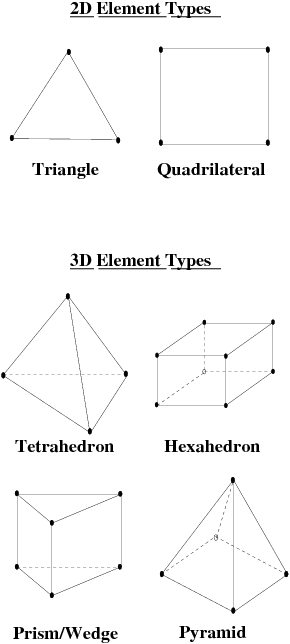Since Ansys Polyflow is an unstructured solver, it uses internal data structures to assign an order to the elements, faces, and mesh points in a mesh and to maintain contact between adjacent elements. It does not, therefore, require i, j, k indexing to locate neighboring elements. This gives you the flexibility to use the mesh topology that is best for your problem, since the solver does not force an overall structure or topology on the mesh.
In 2D, quadrilateral and triangular elements are accepted, and in 3D, hexahedral, tetrahedral, pyramid, and wedge elements can be used. (Figure 7.1: Element Types depicts each of these element types.) Hybrid meshes containing quadrilateral and triangular elements or hexahedral, tetrahedral, pyramid, and wedge elements are also acceptable.
Some examples of meshes that are valid for Ansys Polyflow are presented in Examples of Acceptable Mesh Topologies. Choosing the Appropriate Mesh Type explains how to choose the mesh type that is best suited for your problem.



